Toyota Supra VS Renault Clio – Specs, Efficiency & Price Comparison
Which model is the better choice – the Toyota Supra or the Renault Clio? We compare performance (441 HP vs 143 HP), boot capacity (290 L vs 391 L), efficiency (7.10 L vs 4.30 L), and of course, the price (54200 £ vs 16600 £).
Find out now which car fits your needs better!
The Toyota Supra (Coupe) is powered by a Petrol engine and comes with a Automatic or Manuel transmission. In comparison, the Renault Clio (Hatchback) features a Full Hybrid, Petrol or LPG engine and a Automatic or Manuel gearbox.
When it comes to boot capacity, the Toyota Supra offers 290 L, while the Renault Clio provides 391 L – depending on what matters most to you. If you’re looking for more power, you’ll need to decide whether the 441 HP of the Toyota Supra or the 143 HP of the Renault Clio suits your needs better.
There are also differences in efficiency: 7.10 L vs 4.30 L. In terms of price, the Toyota Supra starts at 54200 £, while the Renault Clio is available from 16600 £.
Compare all the key specs now and find out which model fits your lifestyle best!
Toyota Supra
The Toyota Supra stands as an iconic symbol in the world of sports cars, blending striking aesthetics with performance. Its sleek design and elegant curves capture attention, while the finely tuned engine offers an exhilarating driving experience. Inside, the driver-focused cockpit combines luxury with cutting-edge technology, ensuring both comfort and excitement on the road.
details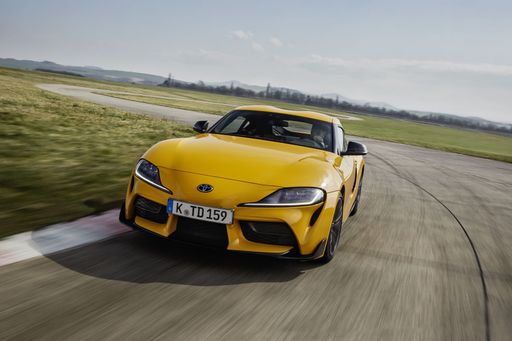 @ toyota-media.de
@ toyota-media.de
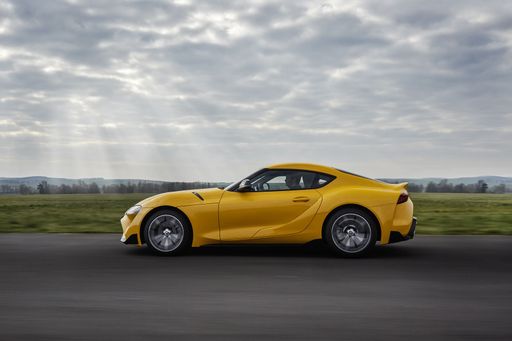 @ toyota-media.de
@ toyota-media.de
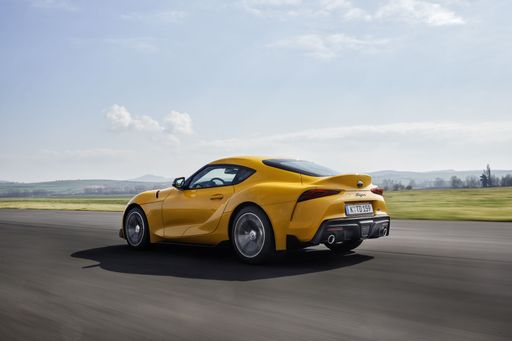 @ toyota-media.de
@ toyota-media.de
Renault Clio
The Renault Clio continues to impress with its sleek design and agile handling, making it a standout choice in the compact car segment. Inside, it offers a surprisingly spacious and comfortable cabin, crafted with high-quality materials that enhance the driving experience. Its fuel efficiency and reliable performance make it an attractive option for both city commuting and longer journeys.
details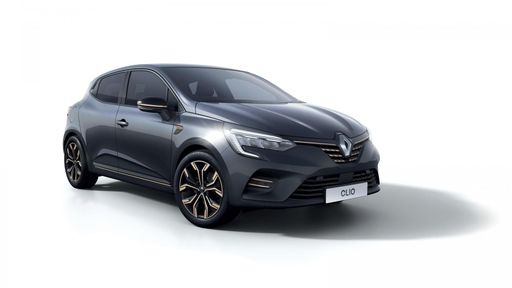 @ renault-presse.de
@ renault-presse.de
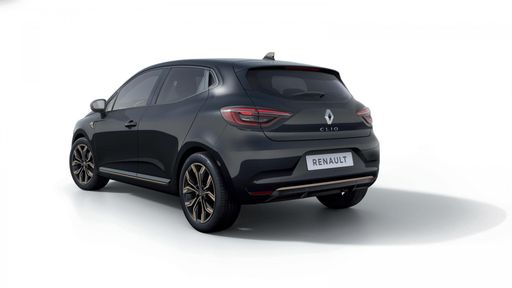 @ renault-presse.de
@ renault-presse.de
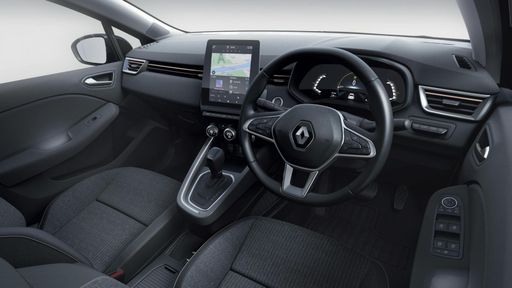 @ renault-presse.de
@ renault-presse.de

|

|
|
|
|
Costs and Consumption |
|
|---|---|
|
Price
54200 - 122400 £
|
Price
16600 - 23000 £
|
|
Consumption L/100km
7.1 - 9 L
|
Consumption L/100km
4.3 - 7 L
|
|
Consumption kWh/100km
-
|
Consumption kWh/100km
-
|
|
Electric Range
-
|
Electric Range
-
|
|
Battery Capacity
-
|
Battery Capacity
0.60 kWh
|
|
co2
161 - 204 g/km
|
co2
97 - 122 g/km
|
|
Fuel tank capacity
52 L
|
Fuel tank capacity
32 - 42 L
|
Dimensions and Body |
|
|---|---|
|
Body Type
Coupe
|
Body Type
Hatchback
|
|
Seats
2
|
Seats
5
|
|
Doors
3
|
Doors
5
|
|
Curb weight
1395 - 1580 kg
|
Curb weight
1124 - 1331 kg
|
|
Trunk capacity
290 L
|
Trunk capacity
301 - 391 L
|
|
Length
4379 mm
|
Length
4053 mm
|
|
Width
1854 - 1867 mm
|
Width
1798 mm
|
|
Height
1276 - 1292 mm
|
Height
1440 mm
|
|
Payload
215 - 315 kg
|
Payload
398 - 406 kg
|
Engine and Performance |
|
|---|---|
|
Engine Type
Petrol
|
Engine Type
Full Hybrid, Petrol, LPG
|
|
Transmission
Automatic, Manuel
|
Transmission
Automatic, Manuel
|
|
Transmission Detail
Automatikgetriebe, Schaltgetriebe
|
Transmission Detail
Automatikgetriebe, Schaltgetriebe
|
|
Drive Type
Rear-Wheel Drive
|
Drive Type
Front-Wheel Drive
|
|
Power HP
258 - 441 HP
|
Power HP
67 - 143 HP
|
|
Acceleration 0-100km/h
4.3 - 5.2 s
|
Acceleration 0-100km/h
9.3 - 17.1 s
|
|
Max Speed
250 - 275 km/h
|
Max Speed
160 - 174 km/h
|
|
Torque
400 - 571 Nm
|
Torque
95 - 205 Nm
|
|
Number of Cylinders
4 - 6
|
Number of Cylinders
3 - 4
|
|
Power kW
190 - 324 kW
|
Power kW
49 - 105 kW
|
|
Engine capacity
1998 - 2998 cm3
|
Engine capacity
999 - 1598 cm3
|
General |
|
|---|---|
|
Model Year
2024 - 2025
|
Model Year
2023 - 2024
|
|
CO2 Efficiency Class
F, G
|
CO2 Efficiency Class
C, D
|
|
Brand
Toyota
|
Brand
Renault
|
Toyota Supra
A Revitalised Icon: The Toyota Supra
The Toyota Supra has been a byword for performance and style since its inception. In its latest iteration, the Supra continues to captivate automotive enthusiasts with its blend of heritage and modern innovation. With a stunning profile and state-of-the-art engineering, the Toyota Supra is more than just a sports car; it’s a testament to Toyota’s commitment to excellence.
Engineering Excellence Under the Hood
At the heart of the Toyota Supra lies a sophisticated 2.0-litre turbocharged four-cylinder engine. This power unit, with a displacement of 1998 cm3, provides a thrilling 258 PS (190 kW) and an impressive torque output of 400 Nm. Such output doesn’t come at the cost of efficiency, as the Supra’s fuel consumption stands at an economical 7.1 L/100 km, supported by an automatic transmission that emphasises smooth power delivery and driving comfort.
Driving Dynamics and Performance
Driving the Toyota Supra is an experience defined by precision and agility. With an acceleration from 0 to 100 km/h in just 5.2 seconds and a maximum speed of 250 km/h, the Supra emboldens its driver with confidence. The rear-wheel-drive layout provides dynamic prowess, ensuring a well-balanced and responsive performance on both straight roads and winding tracks.
Design: A Nod to Tradition with Modern Flair
The design of the Toyota Supra is a harmonious blend of old and new. Its coupe silhouette is characterised by sleek lines and an assertive stance, true to its sports car roots. Measuring 4379 mm in length, 1854 mm in width, and 1292 mm in height, the Supra asserts itself with a compact yet muscular profile. The bold aesthetics are complemented by innovative features that emphasise aerodynamics and driving stability.
Safety and Technological Innovations
Toyota embeds cutting-edge technology within the Supra to enhance driver and passenger safety. Modern connectivity options, driver-assistance systems, and a CO2 efficiency class of F reflect Toyota’s dedication to integrating technology without compromising performance. The Supra’s technologically advanced cockpit connects seamlessly with today’s demand for a digitally proficient driving environment.
Comfort and Practicality
Despite its focus on performance, the Toyota Supra does not neglect practicality. Offering a surprisingly spacious 290 litres of boot space and a tank size of 52 litres, it accommodates both the need for speed and everyday usability. The interior craftsmanship prioritises comfort, ensuring that the Supra remains a suitable companion for both the daily commute and longer escapades.
Conclusion: An Icon Reimagined for the Future
The Toyota Supra stands out not only as a reborn icon but as a forward-thinking sports car that embodies Toyota’s innovative spirit. With a range of options such as the Dynamic Automatik and Pure Automatik trims, the Supra offers tailored experiences for its discerning audience. Ultimately, this modern legend continues to inspire car lovers, representing a perfect harmony of heritage and innovation.
Renault Clio
Introduction to the Renault Clio
The Renault Clio, a popular choice among compact cars, has continually advanced its design and technology to maintain a strong position in the automotive market. With enhancements in engineering, efficiency, and aesthetic appeal, the Clio remains a top contender in the hatchback category.
Advanced Hybrid Technology
The Renault Clio's hybrid technology is one of its standout features. The E-Tech Hybrid system optimises both performance and efficiency, offering a seamless transition between electric and fuel-powered driving. This setup results in an impressive fuel consumption rate of 4.3 L/100km, making it an attractive option for eco-conscious drivers.
Efficient Engine Options
Renault offers a variety of engine choices for the Clio, accommodating different driving styles and preferences. From the economical SCe 65 manual variant to the powerful TCe 100 LPG gas version, each option is engineered to balance performance with fuel efficiency. With outputs ranging from 67 to 143 PS, drivers can enjoy a tailored driving experience.
Design and Comfort
The Renault Clio stands out with its sleek and modern design, characterized by its hatchback body style. The interior boasts an ergonomic layout with seating for five, ensuring passenger comfort and convenience. With a boot capacity of 301 to 391 litres, the Clio also offers practical storage solutions for everyday use.
Safety and Innovation
Safety is a key priority for Renault, and the Clio reflects this commitment with its suite of innovative safety features. Advanced driver-assistance systems are integrated throughout, enhancing both safety and usability. The Clio encompasses features like lane departure warning, automatic emergency braking, and adaptive cruise control.
Cost Efficiency and Environmental Impact
The Renault Clio not only offers affordability with pricing ranging from €18,450 to €26,800, but also promises low running costs. With CO2 emissions between 97 and 130 g/km, the Clio fits well within the C and D efficiency classes. This makes it a cost-effective and environmentally friendly choice for modern drivers.
Conclusion
Renault Clio remains a dynamic, dependable and economical option in the compact car segment. With its innovative technologies, diverse engine options, and commitment to safety and design, the Clio continues to impress and adapt to the evolving demands of the automotive world.
The prices and data displayed are estimates based on German list prices and may vary by country. This information is not legally binding.
